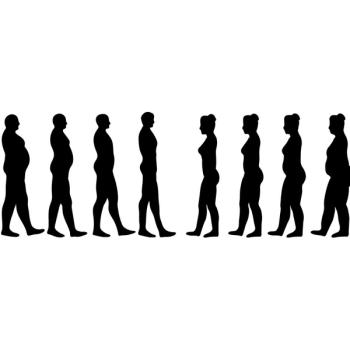
Lumateperone Gets FDA Nod as Adjunctive Therapy for Major Depressive Disorder
As adjunctive treatment, lumateperone is associated with early symptom improvement, good tolerability, and provides a practical no-titration option for adults with persistent MDD.
The FDA has approved
According to today's announcement by Johnson & Johnson, the medication, previously approved for schizophrenia and for bipolar I/II depression as both monotherapy and adjunctive therapy, is associated with minimal weight gain and other metabolic side effects that frequently lead to discontinuation of therapy.3,4
Positive Phase 3 Clincal Trial Data
The federal agency based its approval on 2 phase 3 randomized, double-blind, placebo-controlled trials (Studies 501 and 502), in which adjunctive lumateperone produced statistically significant and clinically meaningful improvements in depressive symptoms compared with antidepressant plus placebo, according to Johnson & Jonson.1 Baseline measures and improvement were measured using the Montgomery–Åsberg Depression Rating Scale (MADRS) and Clinical Global Impression–Severity (CGI-S) scores. The company emphasized the early separation in response with lumateperone from placebo that emerged within 1 to 2 weeks. By week 6, lumateperone showed a −4.9-point (effect size 0.61) and −4.5-point (effect size 0.56) advantage on the MADRS in Studies 501 and 502, respectively.1
For clinicians weighing tolerability, the safety profile in MDD aligns with findings from prior lumateperone trials in schizophrenia and bipolar depression. Rates of weight gain, metabolic changes, akathisia, and restlessness were comparable to placebo. Sexual side effects were uncommon. The most frequent adverse effects included somnolence, dizziness, nausea, dry mouth, fatigue, and diarrhea.1
“Depression is a complex disorder that affects each person differently, underscoring the urgent need for a range of effective and well-tolerated treatment options,” Roger S. McIntyre, MD, professor of psychiatry and pharmacology at the University of Tornoto, said in a statement. “For people who are still experiencing lingering depressive symptoms while on an antidepressant, adding [lumateperone] to a patient’s treatment regimen may offer early improvement, with the potential for remission—the ultimate goal of treatment.”
Long-term data from a 26-week open-label extension (Study 503) also reinforced durability of benefit and tolerability, demonstrating that 80% of participants achieved response and 65% met criteria for remission, with low rates of cardiometabolic or extrapyramidal symptoms.5
While the precise mechanism of lumateperone in MDD remains unknown, its pharmacologic profile includes high 5-HT2A receptor occupancy and moderate D2 occupancy at therapeutic doses. Clinicians can initiate treatment directly at 42 mg once daily.6
MDD affects roughly 22 million US adults, and an estimated two-thirds continue to experience residual symptoms despite antidepressant therapy. Against this backdrop, an adjunctive agent with early onset, favorable tolerability, and minimal metabolic burden may address a significant unmet need.
"The introduction of new treatment options, and continued innovation in mental health, has enabled us to reset expectations for living with depression and offers people hope that achieving lasting wellness and remission is possible,” Michael Pollock, CEO of the Depression and Bipolar Support Alliance, concluded.1
References
1. FDA approval of CAPLYTA® (lumateperone) has the potential to reset treatment expectations, offering hope for remission in adults with major depressive disorder. News release. Johnson & Johnson. November 6, 2025. Accessed November 6, 2025.
2. Rush AJ, Trivedi MH, Wisniewski SR, et al. Acute and longer-term outcomes in depressed outpatients requiring one or several treatment steps: a STAR*D report. Am J Psychiatry. 2006;163(11):1905-17. doi:10.1176/ajp.2006.163
3. Durgam S, Earley W, Kozauer S, et al. Lumateperone as adjuntive therapy in patients with major depressive disorder: results from a randomized, doulbe-blind, phase 3 tiral. J Clin Psychiatry. 2025;86(4):25m15848. doi: 10.4088/JCP.25m15848
4. Durgam S, Earley W, Kozauer S, Chen C, Escher T, Cutler A. Long-term adjunctive lumateperone treatment in major depressive disorder: results from a six-month open-label extension study. Int J Neuropsychopharmacol. 2025;28(Suppl 2):ii77. doi:10.1093/ijnp/pyaf052.152
5. Caplyta. [Prescribing information]. Intra-Cellular Therapies, Inc, 2025. Accessed November 6, 2025. https://www.intracellulartherapies.com/docs/caplyta_pi.pdf
6. Jennings S. FDA review sought for lumateperone as adjunctive therapy for major depressive disorder. Patient Care. December 13, 2024. Accessed November 6, 2025. https://www.patientcareonline.com/view/fda-review-sought-for-lumateperone-as-adjunctive-therapy-for-major-depressive-disorder
Newsletter
Enhance your clinical practice with the Patient Care newsletter, offering the latest evidence-based guidelines, diagnostic insights, and treatment strategies for primary care physicians.

















































































































































































































































































